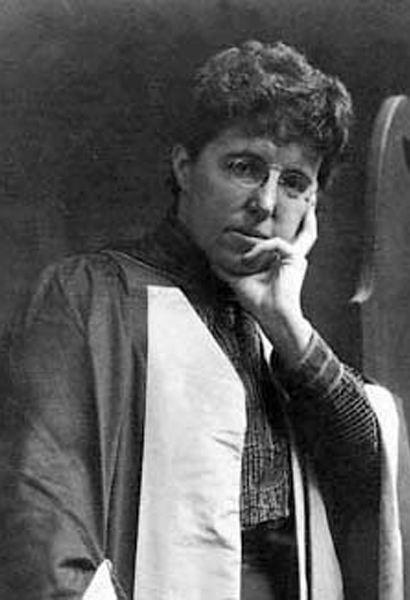

Birth: June 8, 1858
Death: November 10, 1931
Specialty: Mathematics
Major Contributions:
Scored 8th on Cambridge Mathematical Tripos Exam
Founding Faculty Member, Bryn Mawr College
1st Woman in New York Mathematical Society
Dr. Charlotte Angas Scott spent her lifetime challenging the status quo in regard to women in mathematics and was able to help pave the way for many female mathematicians.
Attending Girton College she was granted special permission in 1880 to take the University of Cambridge Mathematical Tripos examinations, scoring eighth, but was denied the title that should have accompanied this score due to her gender. There was much protest with this decision from the male students at Cambridge who shouted out her name at the reading of the awards at their graduation ceremony.
As a woman she was also not awarded an actual degree at the time, but while she began teaching at Girton she decided to take an external University of London degree. She was awarded a BS in 1882 and a doctorate three years later. In 1885 she moved to the United States to become a founding faculty member of Bryn Mawr College, serving as the only member of the mathematics department.
A few years later she published her first book, a geometry text that was the first of four that she authored during her career. She also wrote numerous papers on various math topics including one entitled A Proof of Noether‘s Fundamental Theorem, considered to be the first mathematics paper written in America to be taken seriously in Europe.
Scott struggled with losing her hearing for most of her adult life, but she never let this stop her. She continued to lecture in the same fashion as before but did have a graduate student present to help answer questions from students as eventually she could not hear them.
In 1906 she was diagnosed with an acute case of rheumatoid arthritis which did interrupt her work for a time. She was encouraged to spend time outside exercising, so she took up gardening and created a new strain of chrysanthemum. Retiring from teaching in 1924 she remained at the college for a final year to supervise the completion of the work of her seventh doctoral student after which time she returned to England, passing away in 1931.
Written by Angela Goad
Sources:
Biographies of Women Mathematicians: Charlotte Angas Scott
See Also:
Charlotte Angas Scott (American Mathematical Society)
